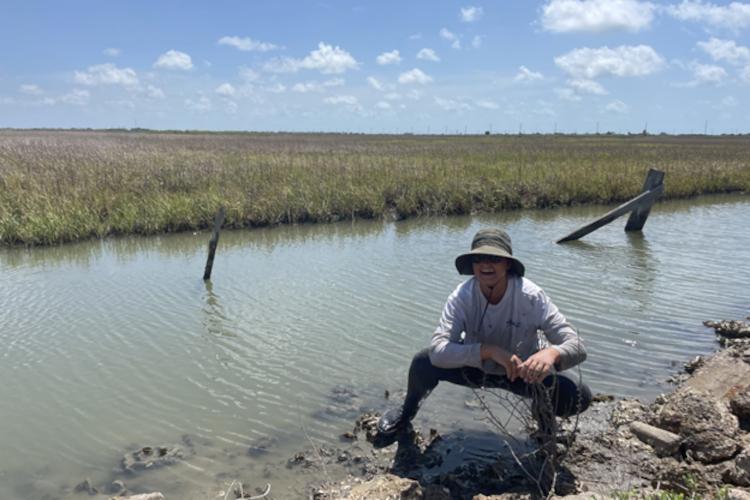As part of my internship with the Southeast Fisheries Science Center I conducted a project that produced a snapshot of pH variability in salt marsh ecosystems to provide a better understanding of the optimal pH range for oyster growth. With this information, the goal is to help inform site selection for oyster aquaculture and restoration efforts by targeting areas in the marsh where oysters grow the largest and fastest. This blog describes how I designed my project and the learning experiences I encountered along the way.
The Project Layout
This research project was an addition to a current study that focuses on a large estuarine system in the northern Gulf of Mexico coast in Galveston Bay, Texas.
During the study we used a variety of sensors to measure temperature, salinity, and pH for a total of 1 week across three sites in Galveston Bay of low, medium, and high salinity ranges. At each study site, we selected three microhabitats (open water, marsh edge, and tidal creek) for sensor placement. These were chosen to better understand the conditions of each habitat type to determine if one would have more favorable conditions for oyster growth.
Habitats occurring along an edge, such as marsh edges, tend to be higher in community diversity and productivity. The Nature Conservancy allowed us to use one of their preserves, the Texas City Prairie Preserve, for the medium salinity site in this study, and without their cooperation, I would not have been able to complete this project.
In addition to site monitoring, we collected water samples which were analyzed in the lab to measure the carbonate system, which is key to oyster shell calcification. We then sampled the swimming organisms (nekton) within each microhabitat with a benthic sled—a special type of net designed to be dragged along the seafloor to collect organisms. This type of sampling provided information on the diversity and abundance of swimming organisms found at each site. This information was of interest to the scientists at the center working in the Habitat Ecology Branch, who study the influences of habitat on Gulf of Mexico fishery species.
One of the major benefits of oyster reefs is that they provide habitat for other organisms and can attract a diverse range of crustacean and fish species. We used this sampling method to investigate differences in these communities within each microhabitat. This study will eventually be replicated and compared against another salt marsh ecosystem along the east coast of the U.S. in Savannah, Georgia.
A Learning Experience
Besides learning from the informative data I collected, I learned most about the reality of conducting fieldwork as a young marine scientist. I’ve had plenty of experience in the field from longlining sharks to studying tropical corals, but nothing can prepare you for leading your own field project. Fieldwork is like packing for a trip to an unknown destination with no chance of buying supplies along the way. As the principal investigator, you are responsible for identifying all the tools you may need, sample containers, protective gear, data sheets, pens for taking notes, maps, tide charts, and any and all backups in case something goes wrong. I had three checklists for each fieldwork day: one for myself, one for working supplies, and one for boat and transportation necessities. The most important thing I learned? Never forget the zip ties. Zip ties are a marine scientist’s best friend.
Meet the Blogger
Clöe Lemaire
Clöe Lemaire is from Jacksonville, Florida and completed her bachelor’s degree at the University of North Florida in coastal biology and French language. She is now pursuing her masters degree at Savannah State University in Georgia. Her favorite part about marine science is that everyday is a different challenge. She hopes to continue her research in habitat conservation and restoration by pursuing a career with NOAA after graduation.







